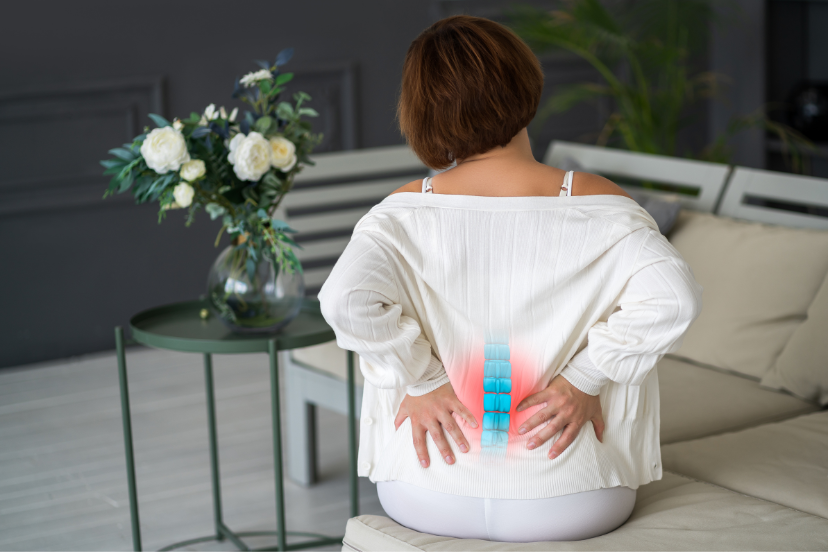Osteoporosis in Women: Breaking Down What You Need to Know
Introduction
Welcome to our comprehensive guide on osteoporosis in women! In this article, we’ll delve into the nitty-gritty of this bone condition that affects millions of women worldwide. From understanding its causes to exploring preventive measures and treatment options, we’ve got you covered. So, let’s kick off this bone-boosting journey by tackling the basics of osteoporosis in women.
Osteoporosis in Women: A Primer
Osteoporosis in women is a bone disease characterized by decreased bone density and increased risk of fractures. It predominantly affects women, especially as they age and go through menopause. This condition weakens bones, making them fragile and prone to fractures even with minor bumps or falls.
What Causes Osteoporosis in Women?
Wondering what triggers osteoporosis in women? Several factors contribute to its development, including:
- Hormonal Changes: The hormonal fluctuations that occur during menopause, specifically decreased estrogen levels, play a significant role in bone loss.
- Age: As women age, their bones naturally become less dense, making them more susceptible to bone loss.
- Lifestyle Choices: Poor diet, lack of exercise, smoking, and excessive alcohol consumption can all accelerate bone loss.
- Genetics: A family history of osteoporosis can increase a woman’s risk of developing the condition.
- Medical Conditions: Certain medical conditions such as rheumatoid arthritis and hormonal disorders can contribute to bone loss.
Signs and Symptoms of Osteoporosis in Women
Detecting osteoporosis in its early stages can be challenging as it often progresses without any symptoms until a fracture occurs. However, some warning signs to watch out for include:
- Back Pain: Persistent back pain, caused by fractured or collapsed vertebrae, can be a sign of osteoporosis.
- Loss of Height: Osteoporosis can lead to a stooped posture and a gradual loss of height over time.
- Fractures: Women with osteoporosis are more prone to fractures, particularly in the hip, wrist, and spine.
Prevention Strategies for Osteoporosis in Women
Prevention is key when it comes to osteoporosis. Here are some proactive steps women can take to maintain optimal bone health:
- Balanced Diet: Ensure your diet is rich in calcium and vitamin D, essential nutrients for bone strength.
- Regular Exercise: Engage in weight-bearing exercises like walking, jogging, or dancing to stimulate bone growth.
- Quit Smoking: Smoking accelerates bone loss, so kicking the habit can help preserve bone density.
- Limit Alcohol Intake: Excessive alcohol consumption can weaken bones, so aim to drink in moderation.
- Bone Density Testing: Women over the age of 65 should undergo regular bone density testing to monitor their bone health.
- Medication: In some cases, healthcare providers may prescribe medications to prevent or treat bone loss, especially for women at high risk.
Treatment Options for Osteoporosis in Women
If diagnosed with osteoporosis, various treatment options are available to help manage the condition and reduce the risk of fractures. These may include:
- Medications: Bisphosphonates, hormone therapy, and other medications can help slow bone loss and increase bone density.
- Calcium and Vitamin D Supplements: Supplements may be recommended to ensure adequate intake of these essential nutrients.
- Lifestyle Changes: Adopting a healthy lifestyle that includes regular exercise, a balanced diet, and smoking cessation can complement medical treatment.
FAQs About Osteoporosis in Women
- Can osteoporosis in women be prevented? Yes, adopting a healthy lifestyle that includes proper nutrition, regular exercise, and avoiding harmful habits like smoking can help prevent osteoporosis.
- At what age should women start worrying about osteoporosis? Women should be proactive about bone health starting in their 30s, but especially after menopause when bone loss accelerates.
- Are there any dietary supplements that can help prevent osteoporosis? Calcium and vitamin D supplements are crucial for maintaining bone health and preventing bone loss, particularly for women with inadequate dietary intake.
- What role does exercise play in preventing osteoporosis? Weight-bearing exercises, such as walking, jogging, and weightlifting, help stimulate bone growth and strengthen bones, reducing the risk of osteoporosis.
- Is osteoporosis only a concern for older women? While bone loss is more common in older women, it can affect women of all ages, especially those with risk factors such as a family history of the condition.
- Can osteoporosis be reversed once diagnosed? While osteoporosis cannot be fully reversed, treatment options can help slow bone loss, increase bone density, and reduce the risk of fractures.
Conclusion
In conclusion, osteoporosis in women is a serious health concern that requires proactive management and preventive measures. By understanding its causes, recognizing the signs and symptoms, and adopting a bone-healthy lifestyle, women can reduce their risk of developing osteoporosis and minimize its impact on their quality of life. Remember, it’s never too early to start prioritizing your bone health—take action today to protect your bones for a healthier tomorrow.




